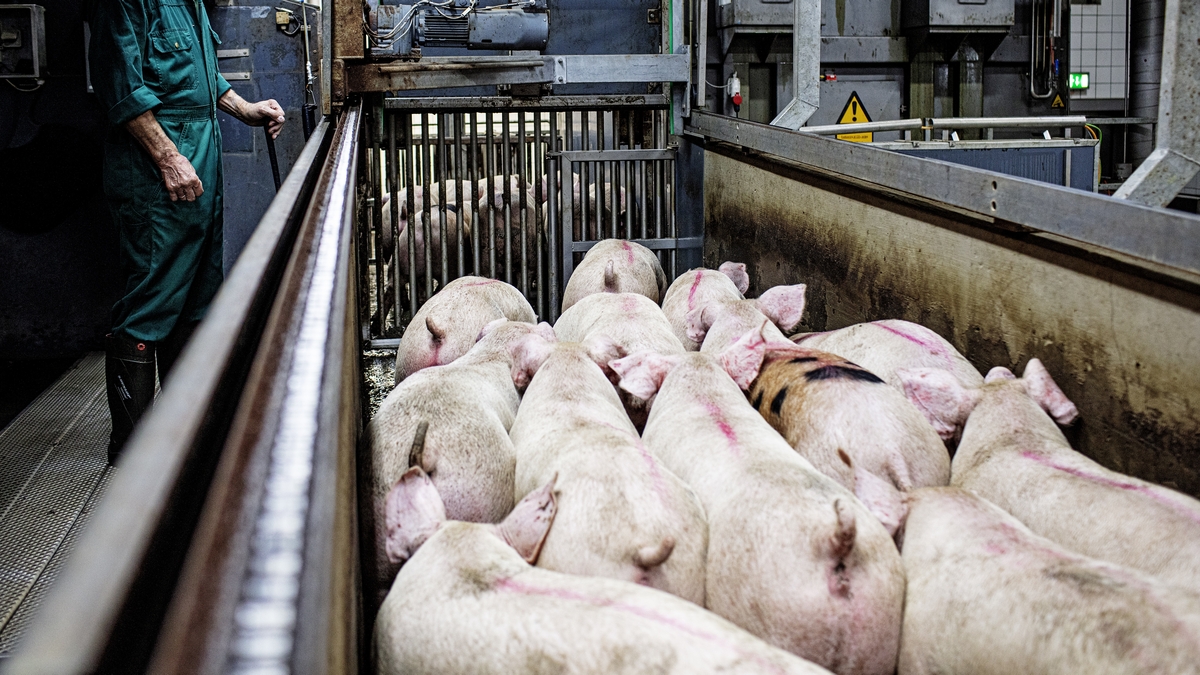Welfare of pigs being handled, stunned and bled in the slaughterhouse

Subject
Welfare during slaughter and killing
Background
When pigs are to be slaughtered, Council Regulation (EC) No 1099/2009 requires that the animals are spared any avoidable pain, distress or suffering (Article 3). In practice this implies that the killing process, which is usually done by bleeding, is preceded by a stunning procedure intended to render the animal unconscious with the least possible amount of fear, pain or distress
Animal-based indicators
To evaluate compliance with the detailed requirements in Council Regulation 1099/2009, animal welfare inspectors assess resource- and/or management-based indicators, e.g. stunner settings and current-output values. However, this should always be complemented with the evaluation of a sufficient number of animal-based indicators (ABI) applying measurable and objective outcome-based criteria to evaluate the welfare of animals at slaughterhouses as this could complement and to some extent confirm the (validity of the) welfare input-based criteria.
Focus areas for inspections
In the review "Pig welfare in slaughterhouses at stunning and bleeding", the following three relevant key areas and corresponding animal welfare indicators are described to assess pig welfare in the stunning and bleeding process:
- Handling: Moving animals into the stunner and holding them there for the purpose of stunning must be done without causing undue fear and distress as may be shown by animals vocalising and trying to turn back or being reluctant to move.
- Stunning: Stunning should apply proper electric current or CO2 concentrations such that animals rapidly lose consciousness and do not recover before they have been killed by bleeding. The review will not deal with mechanical stunning methods, such as the penetrative captive bolt or with emergency stunning or killing practices.
- Bleeding: Operators must carefully watch for signs of recovery throughout the process following stunning and perform re-stunning immediately when there is any reason for doubt such as righting responses, vocalisation, breathing movements, or responses to pain or touch (e.g. palpebral and corneal reflex).
Additionally, the review addresses the underlying scientific knowledge, how to minimise welfare problems and facilitate improved practices, as well as the underlying legal requirements.
Official inspectors and experts from member states are invited to contact EURCAW-Pigs info.pigs@eurcaw.eu with any suggestions, comments or questions to further improve this review.
